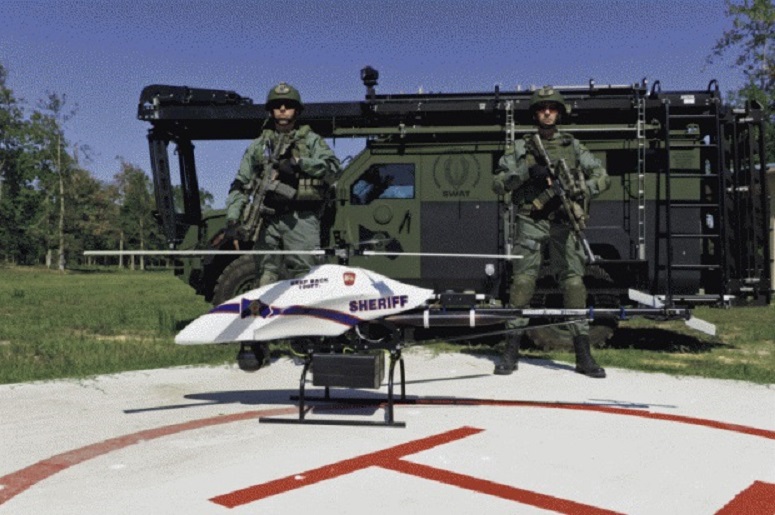
Drones have come a long way in recent years. Far from being merely hunter-killers and surveillance platforms for the military and espionage programs, their applications extends to disaster relief and even civilian use. But despite the staggering rate of progress, conventional drones leave a lot to be desired when it comes to navigating tight environments, such as collapsed buildings or debris-strewn areas.
What’s more, emergency response teams rely on these drones – which usually take the form of Vertical Take-Off or Landing (VTOL) vehicles like quadcopters/quadrotors – to provide a bird’s eye view of an environment. Unfortunately, knowing the situation inside a building or a disaster area often requires a physical presence, and remote pilots cannot enter these spaces without endangering themselves or others.
Hence why DARPA has created the Fast Lightweight Autonomy (FLA) program. Back in December, they issued a Broad Agency Announcement solicitation, in which they specified the need for algorithms that would enable small, unmanned aerial vehicles to quickly navigate obstacles – such as rooms, stairways and corridors – without the need for a remote pilot.
As DARPA program manager Mark Micire explained, the program was inspired by examples found in nature: “Birds of prey and flying insects exhibit the kinds of capabilities we want for small UAVs," he said. "Goshawks, for example, can fly very fast through a dense forest without smacking into a tree. Many insects, too, can dart and hover with incredible speed and precision. The goal of the FLA program is to explore non-traditional perception and autonomy methods that would give small UAVs the capacity to perform in a similar way, including an ability to easily navigate tight spaces at high speed and quickly recognize if it had already been in a room before.”

In keeping with this biologically-inspired model for a drone, DARPA's aim is to create a new breed of autonomous UAVs that are small enough to fit through an open window and fly at speeds of up to 20 meters per second (72 km/hour or 45 mph). In addition, they also want a drone that is capable of navigating within complex indoor spaces independent of communication with outside operators, sensors, or reliance on GPS waypoints.
DARPA claims that, if successful, these algorithms could enhance unmanned system capabilities by reducing the amount of processing power, communications, and human intervention needed for navigating cluttered areas and responding to emergency situations.
According to Stefanie Tompkins, the director of DARPA’s Defense Sciences Office, the benefits of such algorithms go far beyond UAVs. Ground, marine and underwaters systems would also stand to benefit, as would operations in environments where GPS data is unreliable or unavailable.
“Urban and disaster relief operations would be obvious key beneficiaries,” she said, “but applications for this technology could extend to a wide variety of missions using small and large unmanned systems linked together with manned platforms as a system of systems. By enabling unmanned systems to learn ‘muscle memory’ and perception for basic tasks like avoiding obstacles, it would relieve overload and stress on human operators so they can focus on supervising the systems and executing the larger mission.”

Naturally, there are endless military applications for such autonomous drone systems as well. Scout drones that can quickly pass into enemy-occupied buildings or hazardous areas could provide invaluable intel to troops, especially where anti-insurgent operations and urban warfare are concerned. Autonomous hunter-killers that could slip in close to hostile enclaves would also remove the need for aerial bombardments, reducing the likelihood of collateral damage.
Closer to home, there's also the possibility of police drones that could be used to infiltrate buildings during the course of hostage situations. Small fleet of these drones could also be deployed to clandestine locations within a city to provide real-time information on what criminals are up to when they think no one is watching.
The applications for a new breed of highly-manueverable, autonomous drones that self-navigate in and out of tight areas really is endless. As a result, there's also likely to be a great deal of concern from privacy advocates and human rights activists as this program goes forward as well. Knowing that drones can penetrate into even more spaces to conduct even greater levels of surveillance is nothing if not a controversial idea.
But as always, questions surrounding the potential for use and abuse remains wherever UAVs are concerned and the only real answer is to stay informed.
DARPA conducted a "Proposers Day" this past Tuesday, Jan. 6th, and the program is now open to submissions. It will remain open until January 2nd, 2016. For more information, or to make a submission, check out DARPA's proposal at Federal Business Opportunities.
And be sure to check out this promotional video for the FLA program, courtesy of DARPA and the BBC:
Sources:
- www.gizmag.com/darpa-agile-uav/35336/
- www.darpa.mil/NewsEvents/Releases/2014/12/22.aspx
- www.fbo.gov/index?s=opportunity&mode=form&id=38c56cd0dec12a5d3ae9b95849c102e8&tab=core&_cview=0
- www.computerworld.com/article/2863293/darpa-wants-drone-to-hunt-like-a-hawk.html
Image Credits:
- Top Image: DARPA
- Quadrotor: ardrone2.parrot.com
- Police Drone: theblaze








